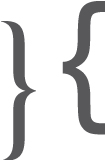
Communication in the 21st century is increasingly devoid of the verbal and visual cues that have been proven to be critical in conveying and interpreting meaning.
As revealed by Professor Albert Mehrabian [1], body language and voice have a profound effect on communication. Mehrabian’s investigations resulted in the following formula applicable to feelings and attitudes: 7% of meaning is in the words that are spoken, 38% of meaning is paralinguistic (the way that the words are said), 55% of meaning is in facial expression.
Communicating with clarity is the challenge imposed with text-based forms of dialogs, and this becomes more and more important as a greater number of our personal and professional exchanges are transacted via text-based methods of delivery. Use of email, text messaging (texting), instant messaging (IM), discussion forums, and social media platforms such as Facebook and Twitter are increasingly routine and rapidly becoming the norm for many day-to-day interactions.
A new set of typographic elements needs to be developed that extends our written vocabulary, complementing and improving the communication opportunities that technology—and its increasingly text-based forms of interactions—offers. Voice-less and face-less interactions create enormous challenges when expressing and interpreting meaning and intent.
A viable system of new punctuation that supports brevity and clarity can be developed utilizing existing typographic glyphs, making implementation of new marks convenient and immediate. Unlike emoticons, smilies, and acronyms, new punctuation marks will have the advantage of being appropriate for all personal and professional dialogs.
Punctus interrogativus, the precursor to the modern-day question mark, made its appearance in the 8th century and was used to indicate that the reader should raise his voice to indicate inquisitiveness. In the 15th century,the exclamation mark was first introduced into English printing. The evolution of affective/expressive punctuation marks has been at a stand-still ever since.
The deficient condition of punctuation is not a new discussion. This perplexing situation has been tested and commented on at various points in the history of the written word by individuals intimately involved with the form and function of type.


Renowned English printer Henry Denham is credited with devising and introducing a mark to indicate rhetorical questions known as punctus percontativus or a percontation mark. A similar symbol was proposed by French poet Alcanter de Brahm (alias Marcel Bernhardt) in his 1899 book L’ostensoir des ironies [The Monstrosity of Irony], but Bernhardt’s mark was intended to indicate sarcasm/irony.
Ambrose Bierce in 1887 suggested a snigger point, or note of cachinnation. Vladimir Nabokov of “Lolita” fame expressed desire for a typographical sign for a smile.

In 1966, renowned French writer Hervé Bazin proposed a host of additional punctuations in his book Plumons l’oiseau.



The Interrobang, introduced in 1962 even made it as far as typewriter keyboards, but found only fleeting fame. The ElRey and the the SarcMark are two very contemporary punctuation offerings that seem to have fueled some degree of discussion, but have yet to find popular usage. This is far from an exhaustive list, and doesn't even touch on all the humorous suggestions the have emerged.
While none of these efforts have made it into popular use, it doesn’t mean that this isn’t an idea whose time has finally come. Emoticon usage has exploded, exactly because there are no expressive punctuations beyond the question and exclamation mark. Sure emoticons can be fun to use, but it is time to embrace more mature mechanisms that can be used in personal and professional contexts.
Consider the advantages of a simple system of marks that are easy and convenient to use, and also specific. By taking the guesswork out of what someone means, and being able to be clear about what you mean quickly and easily, new punctuation has the potential to alleviate a huge number aggravations and disagreements.
Unlike previous efforts that might have been purely hypothetical, needed special downloads and installations, wanted to you to PAY, or required you to remember special key sequences — we can use marks that are right there, right in front of you, right now. They are clearly visible on any standard English-language QWERTY keyboards, and a quick tap away on your tablet and mobile devices.
We don't need new marks, we need to give old marks new meaning. Consider the @ symbol, it’s been around since 1536 and had nothing to do with email or Twitter for most of that time. Speaking of Twitter, the octothorpe a.k.a. pound sign a.k.a. number sign and now better known to millions as the hashtag, can trace its origins as far back as the 14th century, #amazing!
Propagation by imitation is the goal, and you could be leading the way.
Be part of the punctuation evolution: use the marks /
share the point.
[1] Mehrabian, A. (1981) Silent messages: Implicit communication of emotions and attitudes. Belmont, CA: Wadsworth (currently distributed by Albert Mehrabian, email: am@kaaj.com)